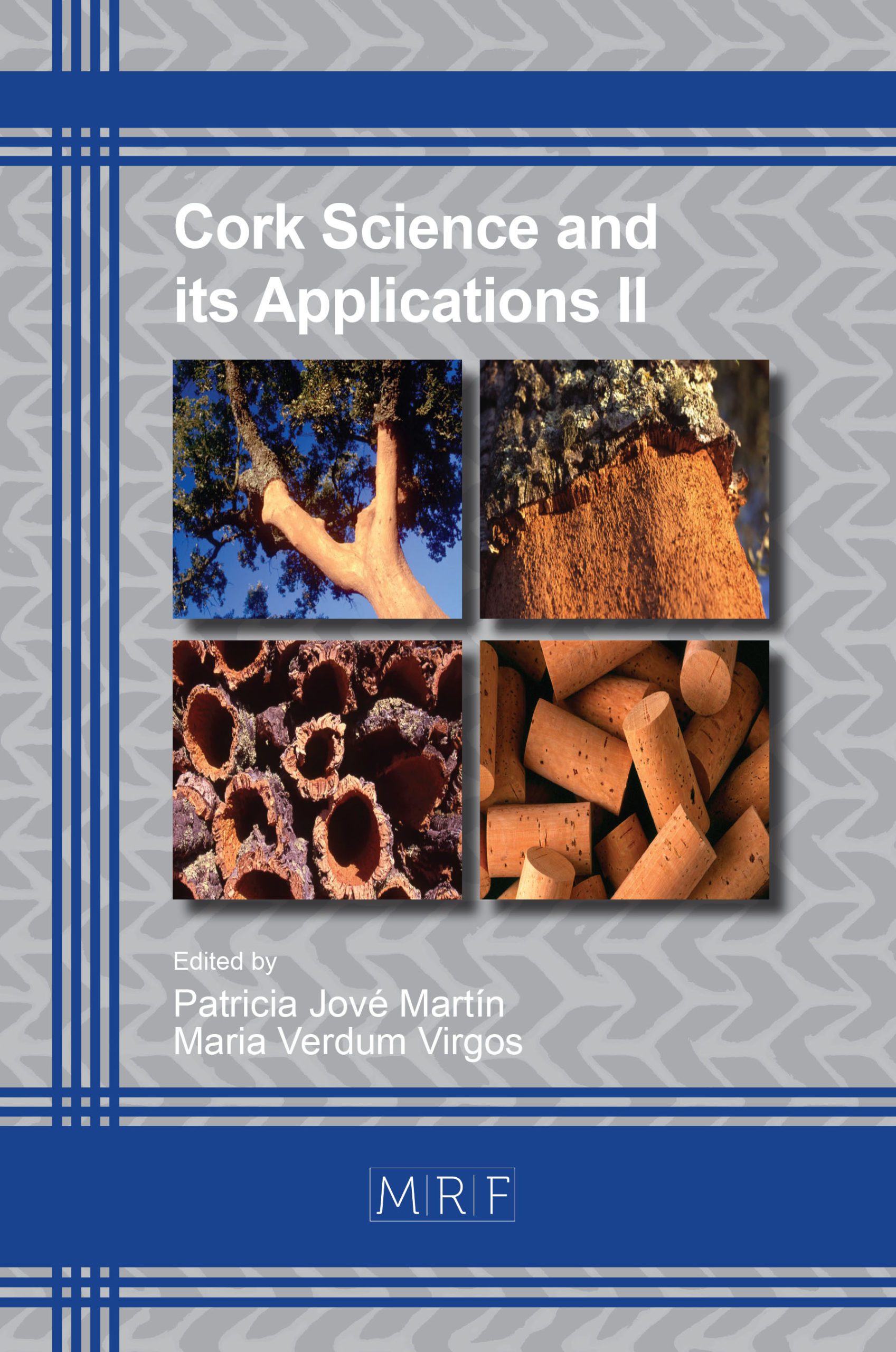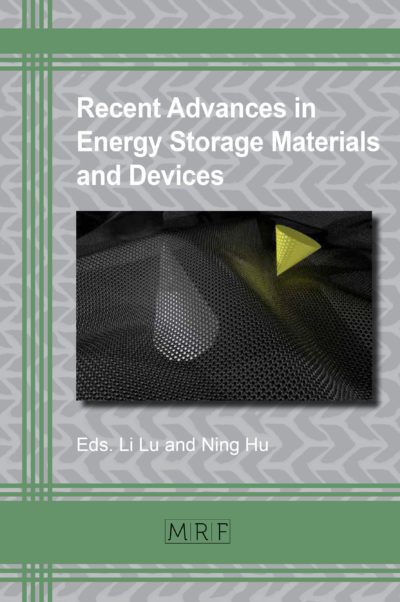Cork Science and its Applications II
Eds. Patricia Jové Martín and Maria Verdum Virgos
Materials Research Proceedings Volume 14
Publication Date 2019, 56 Pages
Print ISBN 978-1-64490-040-6 (release date October 20th, 2019)
ePDF ISBN 978-1-64490-041-3
DOI: 10.21741/9781644900413
Natural cork materials have many interesting applications. The present book places emphasis on such topics as cork quality, crashworthiness of agglomerated cork, architectural applications, cork stoppers, production of hollow cork pieces, 3D print technology filaments based on cork waste, effects of extremely low and high temperatures, and the adaptation of cork oak forests to climate change.
Keywords
Cork Oak, Agglomerated Cork, Architectural Applications of Cork, Natural Cork Stoppers, Hollow Pieces of Cork, Rotational Moulding of Cork, 3D Print Technology based on Cork Waste, 3D Print Technology based on Natural Biological Sources, Crashworthiness of Agglomerated Cork, Low and High Temperature Effects on Cork
flyer
Table of Contents
Stem Diameter and Height as Traits Linked to Cork Quality (Thickness and Porosity) in Cork Oak (Quercus suber L.)
AUGUSTA COSTA, INÊS BARBOSA
New Forest Management Techniques to Improve the Adaptation of Cork Oak Forests to Climate Change
Josep M. Tusell, Roser Mundet, Mario Beltrán, Miriam Pique, Teresa Baiges, Antoni Torrell
Cork: New uses in Architecture
C. Verissimo
Behavior of Natural Cork Stoppers when Modifying Standard Corking Parameters: Three Practical Cases
C. Prades López, M. Sánchez-González
Production of Cork Hollow Pieces by an Innovate Process Based on Rotational Moulding
Miguel Pestana, Manuela Mendes, Luís Miranda, António Corei Diogo
A New 3D Print Technology Filament 100% Based in Natural Biological Sources and Cork Waste
Flávia A. VIEIRA, Sara P. M DA SILVA, José M. DE OLIVEIRA
Crashworthiness of Agglomerated Cork Under the Influence of Extremely Low and High Temperatures
Johannes Wilhelm, Pawel Kaczynski, Mariusz Ptak, Fabio A.O. Fernandes, Ricardo J. Alves de Sousa
About the Editors
Patricia Jové i Martín
Graduated in Biology and Science and Technology of Food from Universitat de Barcelona and Universitat de Girona. Jové is a Doctor in Experimental Sciences and Sustainability, and a specialist in cork focused on the study of the properties and the new applications of cork as a material. Her PhD was focused on the characterisation and evaluation of the capacity of cork and by products on cork industry as biosorbents of pollutants. Dr. Jové has been involved in more than 5 European projects and 20 national projects and is the author or co-author of 15 publications, always with cork as leit motiv. Director of R&D&I Department at Institut Català del Suro since 2014, she is in charge of the management and implementation of ICSuro projects. These projects are focused on two fields: Cork-Wine interaction and new applications of cork in design and architecture. The R&D&I department also advise and helps entrepreneurs to develop new cork products.
Maria Verdum Virgos
Graduated in Biology from the University of Girona and Master in Advanced Microbiology from the University of Barcelona. Ms. Verdum has been working in Catalan Cork Institute (ICSuro) since 2014. I worked as a Laboratory Technician in Cork center Laboratory. In 2016 I had been changed from Quality department (Cork Center Laboratory) to R&D department. Since then, I am a researcher in since 2016. I have been part of 12 Regional, State and European projects. According of aim of ICSuro, all projects are focus on promoting, developing and raising awareness of cork usage. I am co-author of 2 research papers, and 2 more which are in writing. I am author of 3 communications in international scientific conferences and I am co-author of 3 posters. I have been coordination assistant in the conferences of Cork in Science and its Aplications. I had also been involved as a researcher in research group: Genomics and Proteomics of Bacterial Virulence Factors in the Department of Microbiology of the University of Barcelona in 2014 and the Centre de Recerca en Sanitat Animal-Universitat Autonoma de Barcelona (CReSA-UAB) in 2013.

































